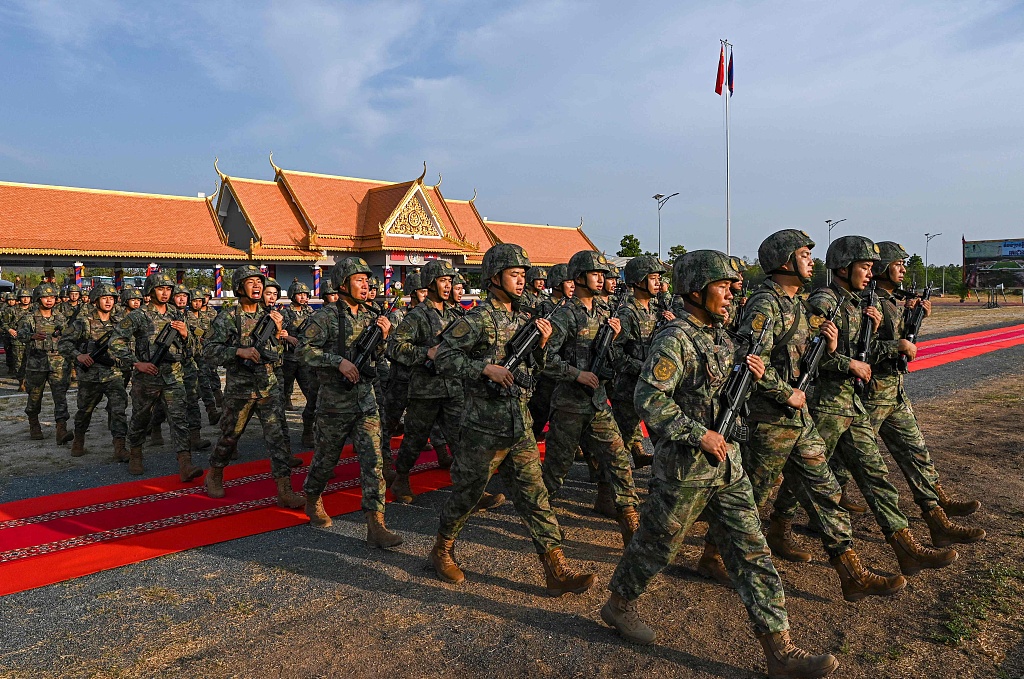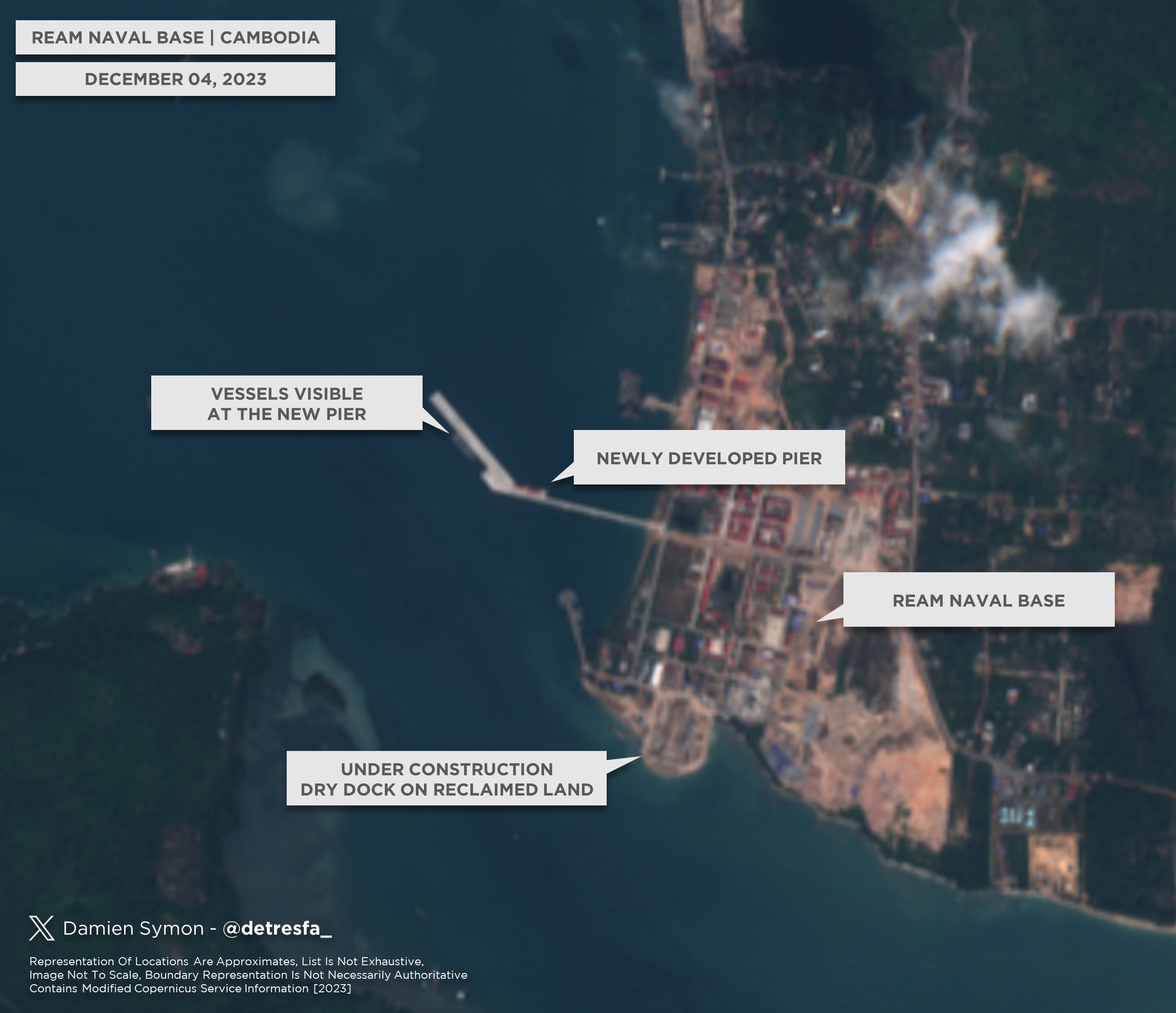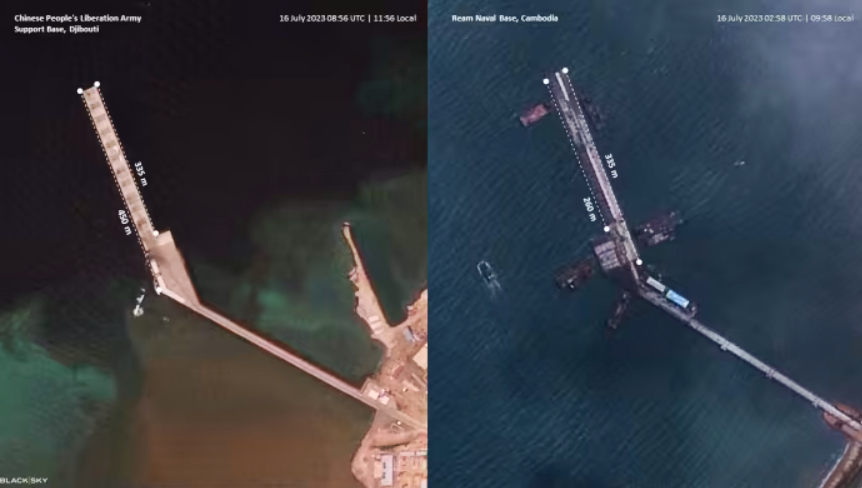Amid concerns that the Ream Naval Base might be used by the People Liberation Army Navy (PLAN) as a military outpost, Cambodia has said that US ships would also be permitted to visit the base.
Assuaging concerns, Cambodia’s Deputy Prime Minister Sun Chanthol said that once the naval facility is completed, any nation’s military could visit the Ream Port. He was addressing an event hosted by the Washington-based think tank Center for Strategic and International Studies.
“The Ream Naval Base is not for the Chinese. The Chinese provided us with the assistance to expand the Ream Naval Base for our national defense, not to be used by the Chinese or any military against another country,” Sun said at the event. “When this naval base is completed, any navy can call on that port, as long as it’s for humanitarian and disaster recovery or joint military exercise.”
However, Sun called on the United States to send smaller ships on a future visit, stating that the water was shallow.
The statement comes as the US is trying to assuage tensions with Cambodia to counter China’s growing influence. The US has been critical of China’s development of the Ream Naval Base and vociferous in its criticism of what it considers a decimation of the political opposition in Cambodia.

Interestingly, the Cambodian Deputy Prime Minister’s statement comes years after a US defense attache was denied full access to the Ream Naval Base during an invited visit in 2021. Additionally, several US-funded buildings were demolished as part of a planned upgrade initiated by China. Cambodian officials, however, clarified that China had nothing to do with the demolitions.
US and Cambodia had held military drills at the Ream Naval Base before its upgradation was kickstarted in 2022. However, over the course of its construction, the two sides have become increasingly alienated.
On its part, Washington suspects that Beijing will ultimately gain control of the base to exert influence in the Indo-Pacific. Both China and the Cambodian government have denied this concern.
US Is Suspicious About Chinese Plans
The US’s suspicion is not without reason. Since last year, two Chinese warships have remained docked at the base for months, sparking concerns. Last month, the Cambodian Defense Ministry acknowledged that Beijing was providing warships to the country.
According to reports, the ships in question are Type 56 corvettes, smaller vessels essentially used for coastal patrols. Following the arrival of these two vessels at Ream in December, reports indicate that the Chinese military has offered training to Cambodian naval personnel for these vessels.
Several observers and Western analysts have expressed concern that China could leverage its generosity in arming Cambodia and constructing a state-of-the-art military facility to get preferential access to the new base, which has thus far denied docking privileges to Western vessels.
Naval affairs expert Collin Koh, who predominantly focuses on the Indo-Pacific region, wrote on X (formerly Twitter): “I believe the arrangement is for Beijing’s access to Ream facilities predicated upon an on-demand basis, meaning they would have to be made available upon PRC request. Beijing isn’t likely to let its investment go to naught.”

Additionally, concerns have been raised about the Ream Naval Facility’s new pier, which can accommodate large vessels, including aircraft carriers.
This has raised eyebrows since the Cambodian Navy does not operate aircraft carriers. Additionally, satellite images of the Ream Naval Base taken in July 2023 showed a nearly finished pier that resembled, in terms of size and design, a pier used by the Chinese military at their exclusive overseas facility in Djibouti.
Previous reports suggested that the base would be handed over to the Cambodian government by the end of September. However, the latest remark by the Cambodian Deputy PM suggests that the construction is yet to be completed.
In February this year, the EurAsian Times reported on the construction at the base, citing satellite imagery obtained and analyzed by Tom Shugart, a former US Navy submariner and defense analyst.

By January 2024, several buildings, along with what looked like foundations and roadways, had been constructed in the base’s northern region. Furthermore, massive fuel tanks were observed, indicating that they could be used by Chinese ships.
While the Cambodian Minister’s statement alleviates some concerns, American distrust of China runs deeper. The relationship between Cambodia and China has deepened over the years, as demonstrated by their joint military drills conducted in May 2024.
The Cambodian navy has long exploited the Ream facility, strategically placed close to the Gulf of Thailand entrance, as a port of entry into the South China Sea. This has raised concerns that China may try to take over the facility as it would be strategic to the PLA’s designs in the region amid rising tensions with the Philippines and other nations.
The Malacca Strait shipping lanes would likely be a major choke point in a conflict between the US and its regional allies. Access to Ream Naval Base would strengthen and broaden Beijing’s naval activities. Further, China could use these facilities to blockade the Malacca Strait and prevent its enemies from resupplying along this vital route in the event of a battle in the South China Sea.
As China expands its influence, it is still restricted due to the lack of a global network of bases and logistical support. The construction of these facilities, therefore, is essential to Beijing’s objective of creating a fully operational blue-water navy capable of conducting operations anywhere in the world, with the Indo-Pacific region being the critical location.
However, China has denied all these reports, accusing the US of a smear campaign aimed at creating unwarranted hysteria. Chinese experts told Global Times that these reports, which routinely suggest Beijing’s intention of militarizing the Ream Naval Base, were meant to drive a wedge between China and Southeast Asia.
- Contact the author at sakshi.tiwari9555(at)gmail.com
- Follow EurAsian Times on Google News




